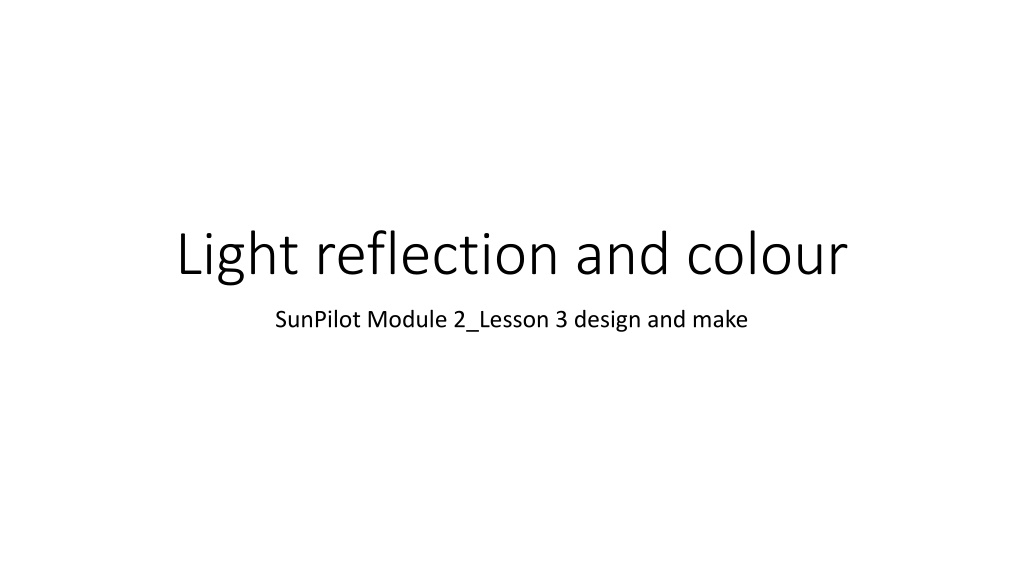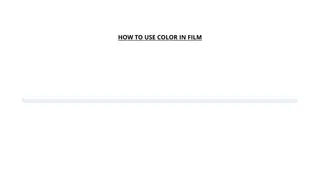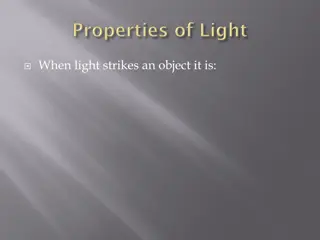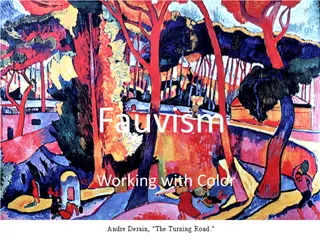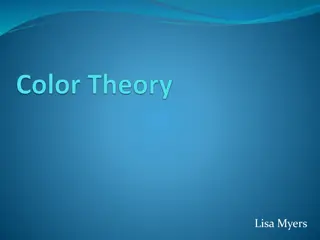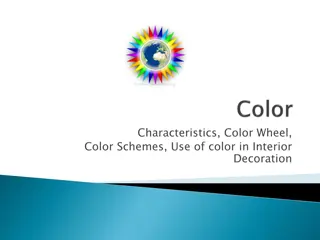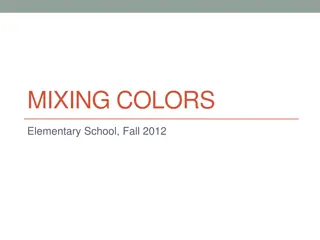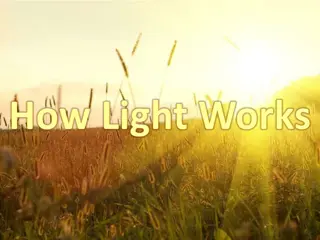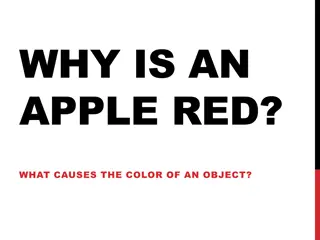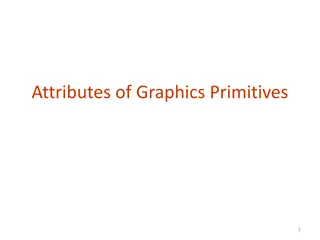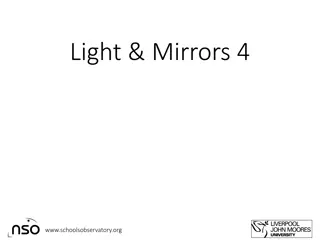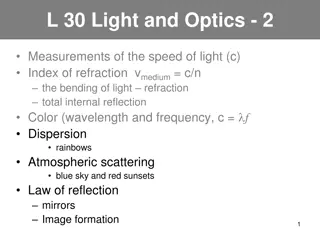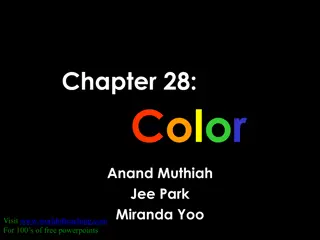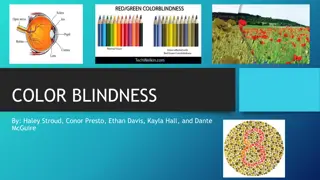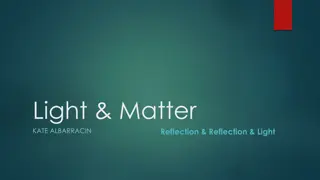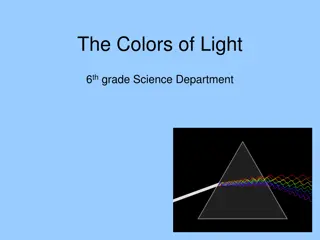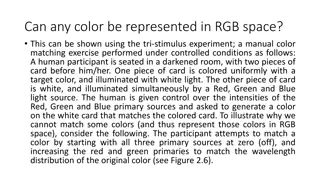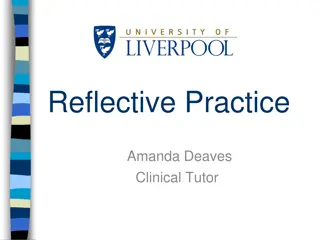Discovering Light Reflection and Color in Nature
Delve into the fascinating world of light reflection and color as sunlight interacts with surfaces to create a spectrum of hues. Explore how angles affect the colors we see and discover the use of reflection in technology, inspired by nature's designs. Plus, learn how to combat screen glare with DIY solutions like crafting a sun visor for your devices.
Download Presentation

Please find below an Image/Link to download the presentation.
The content on the website is provided AS IS for your information and personal use only. It may not be sold, licensed, or shared on other websites without obtaining consent from the author. Download presentation by click this link. If you encounter any issues during the download, it is possible that the publisher has removed the file from their server.
E N D
Presentation Transcript
Light reflection and colour SunPilot Module 2_Lesson 3 design and make
These colours come from light! Sunlight interacts with the feather shape to create colour
Lets see this for ourselves When you shine a torch on the disc, what colour so you see? Can you tilt is so that mostly one colour is visible? What colour is it? Can you tilt it so it is mostly showing blue?
We use reflection in technology Copying nature to make man-made things is called BI O MIM I CRY We can make colour through reflection like the butterflies wing Craft paper
Too reflective! Have you ever had trouble seeing a screen in bright light? Why do you think this happens?
Too reflective! How can you block the sun? Make a sun visor for your screen.
Making a sun visor With your partner think of ways to keep block the sun reflection from your screen. You need to think about: What type of material you will use. How you will attach it to the phone/iPad
Making a sun visor In your copybooks: Draw your plan Label your drawing showing what material you will use. Think about how you will make it. Will you need scissors? Glue? Our Sun Visor My Name:_______________________ My partner s name:________________ List the material you will need Material we will need: My drawing of our design
Making a sun visor Make it! Test it! Does it work? Are you happy with the results? Should you change your design?
Working Scientifically Scientists draw out plans, make objects and test them just like we did today! Think about how practical your invention is: Can you carry your invention around easily? Is this the best approach? Could there be another way to solve the problem?
Nonreflective The opposite of reflective is nonreflective these structures absorb light Remember the moth eye is very dark Because it does not reflect light. This allows it to see better at night.
We use antireflection in technology Scientists are looking to see if they can copy this property for our phone screens They ask: Can we make nonreflective surface like we see in the moth s eye? Yes we can! Scientists a working to make material for our screens to stop light reflection so we can see the screen better. https://youtu.be/2UzorxppGJA
What have we learned today? People look at properties of animals and plants and how we can use them. This is called biomimicry Colour can be made by reflecting light. Blue in most insects is due to the shape of structures on the wings. Nonreflective material like in the moth s eye could help make seeing our computer screens better.
